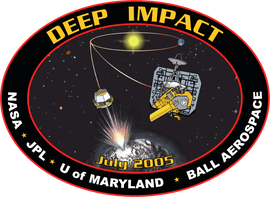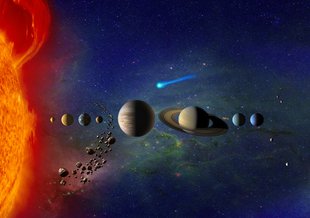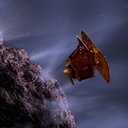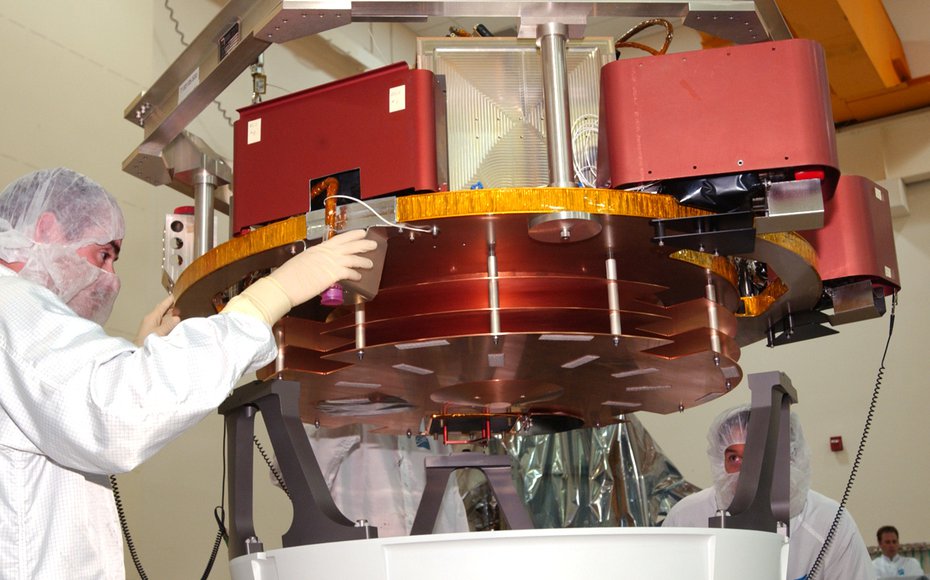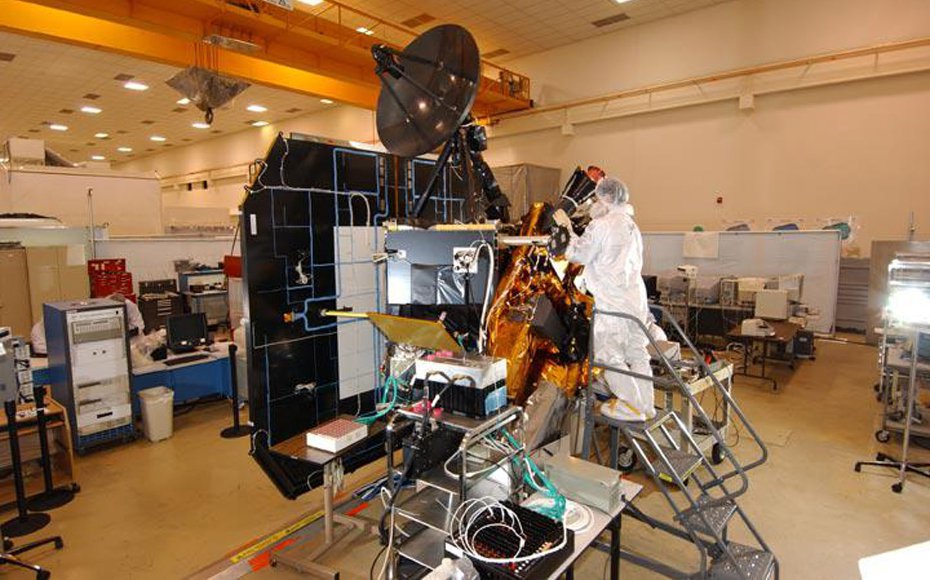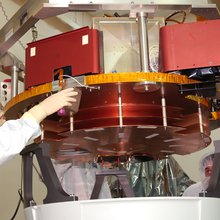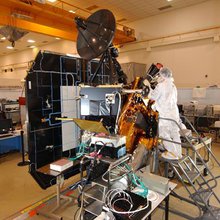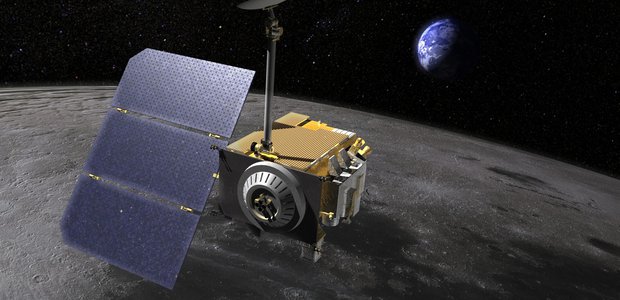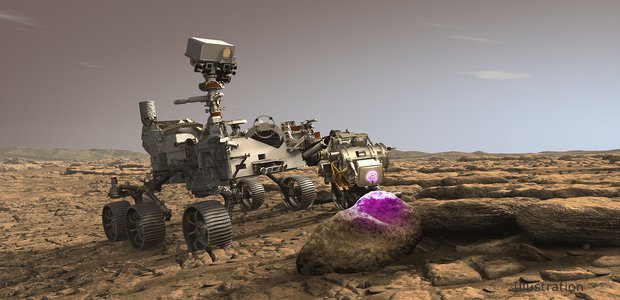- Launch Date January 12, 2005
- Arrival Date July 04, 2005
- End DateAugust 03, 2005
- Mission TypeFlyby
- TargetComet
Mission Overview
The Deep Impact mission was the first attempt to peer beneath the surface of a comet. The craft spanned 268 million miles (431 million kilometers) of deep space in 172 days. It then released an impactor roughly the size of a coffee table, which collided with the city-sized comet, Tempel 1, on July 4, 2005, at 1:52 a.m. EDT. This hyper-speed collision between spaceborne iceberg and copper-fortified, rocket-powered probe was the first of its kind.
Relevance to Astrobiology
Deep Impact provided the first analysis of materials from the interior of a comet and gathered data concerning the role of comets in the formation of planets and the origin of life. Studies on data from Deep Impact showed that the comet contained a substantial amount of organic material, and provided insight into the types of materials that comets could have delivered to the early Earth when life first originated. Deep Impact also showed that the interior was shielded from solar heating, meaning that this material from deep within the comet could be unchanged since the formation of the Solar System.
NASA Astrobiology Involvement
Numerous researchers supported by the NASA Astrobiology Program were involved in the analysis of data from Deep Impact. This includes data collected by the spacecraft itself as well as astronomers who observed the comet using telescopes or other space instruments. Astrobiologists were also involved in aspects of mission design and target selection for Deep Impact.
The Astrobiologists
Researchers supported by the NASA Astrobiology Institute element of the NASA Astrobiology Program used telescope observations to characterize the cometary target of the Deep Impact mission. Observations were also made to characterize the dust created following the impact with Tempel 1. These efforts were lead by Project Investigator Karen Meech at the University of Hawaii.




